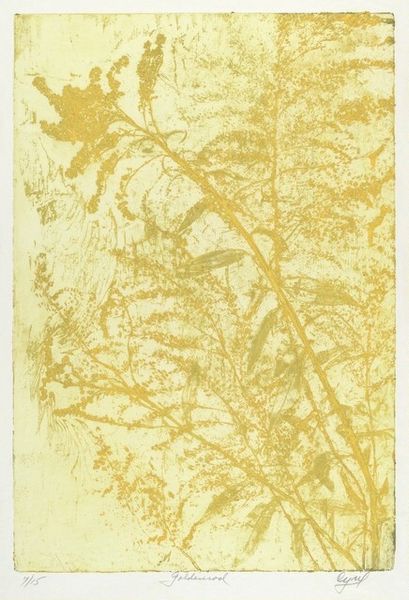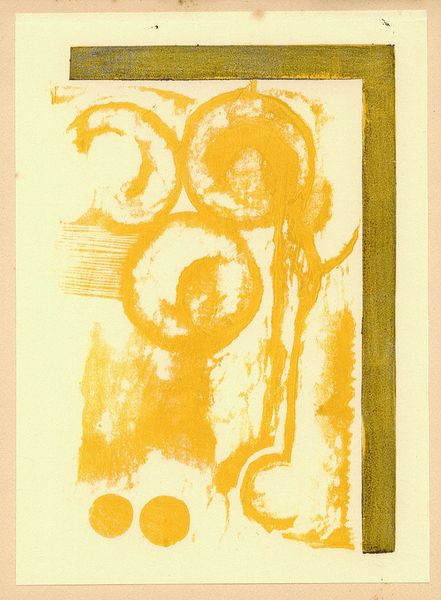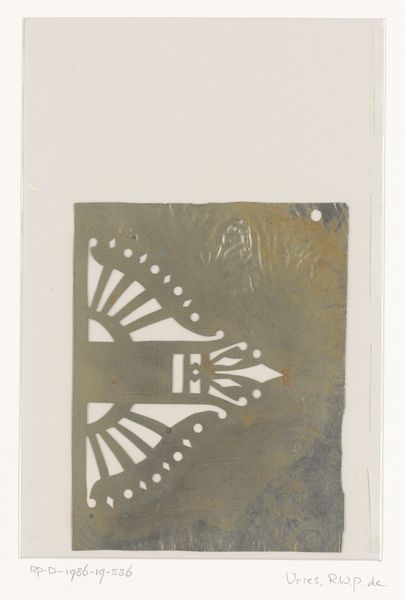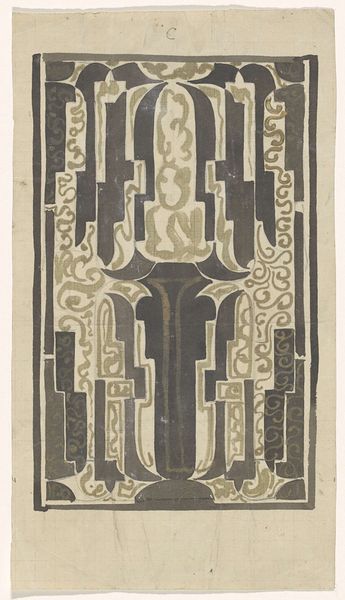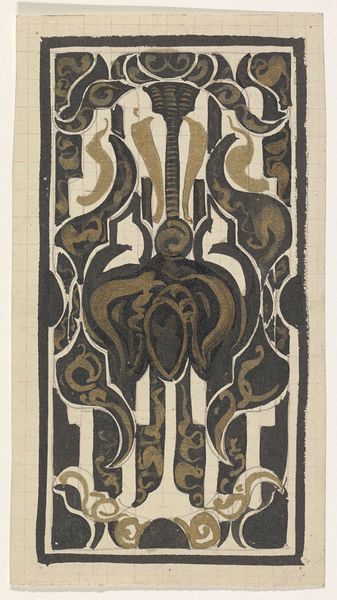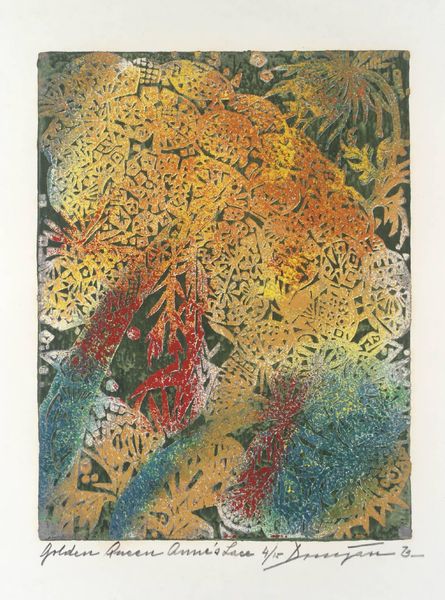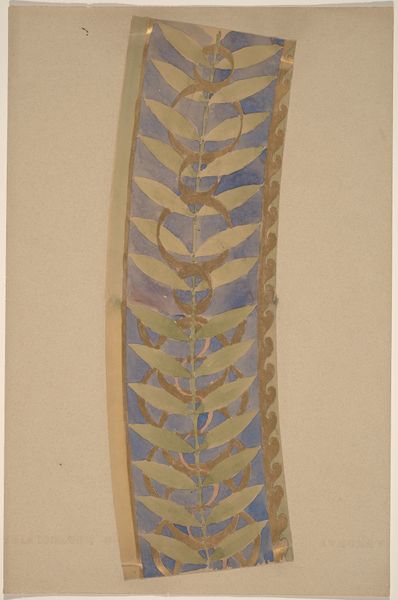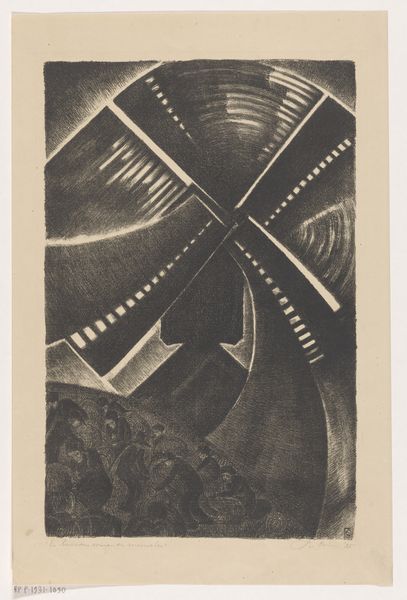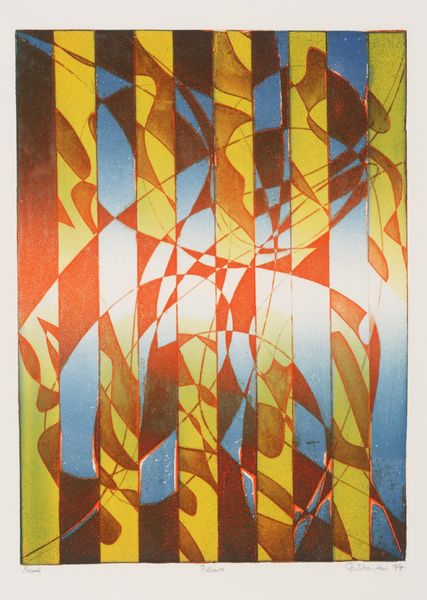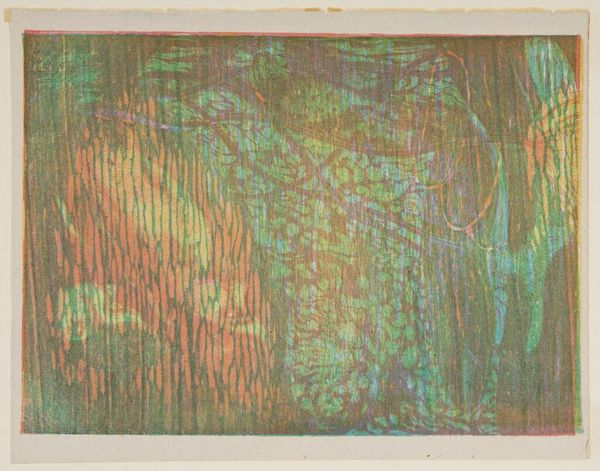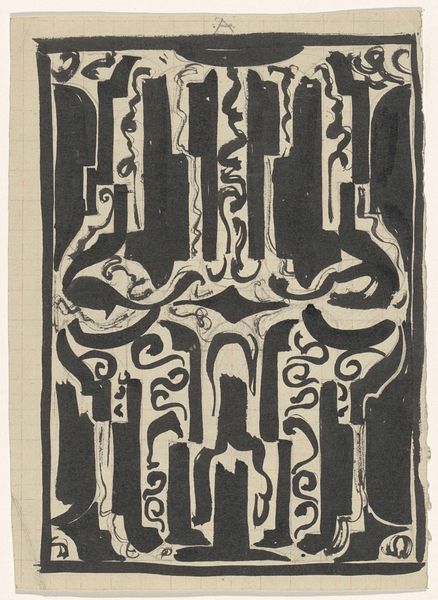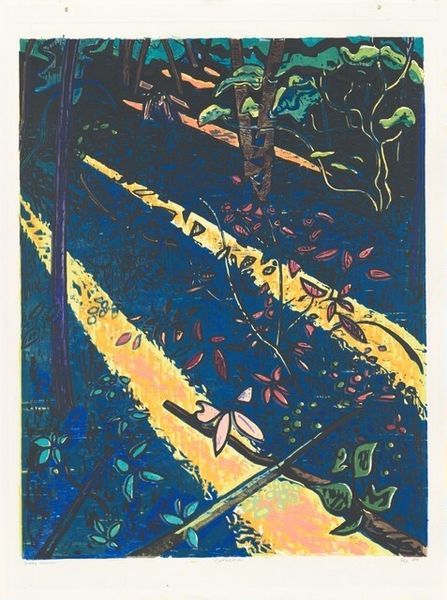
drawing, watercolor
#
drawing
#
art-nouveau
#
landscape
#
figuration
#
form
#
watercolor
#
line
#
symbolism
#
watercolor
Dimensions: height 568 mm, width 207 mm
Copyright: Rijks Museum: Open Domain
Editor: This is Carel Adolph Lion Cachet's "Decoratief ontwerp met een liervogel," a drawing in watercolor dating from around 1874-1945. It's part of the Rijksmuseum collection. The palette is very muted, almost monochromatic, and the lyrebird image is very striking. What do you see in this piece, especially given the Art Nouveau influences? Curator: I see a powerful exploration of symbolism intertwined with the sociopolitical currents of the late 19th and early 20th centuries. Art Nouveau, while beautiful, was often critiqued for its elitism and its detachment from social realities. Do you think this work, with its focus on decorative design, might reflect or subvert these critiques? Editor: Subvert, perhaps? There's something about the stylization of the lyrebird that feels both elegant and… I don't know, maybe a little confrontational? Curator: Exactly! Consider the lyrebird itself. Native to Australia, its presence here raises questions about colonialism and representation. Lion Cachet, a Dutch artist, is engaging with a symbol of a colonized land. How might this artwork be seen as a negotiation—or perhaps even an appropriation—of cultural identity? What meanings were associated with birds at that particular time? Editor: That makes me consider how the decorative function can intersect with identity and power. I initially saw this as just a pretty design, but the layers of meaning are so much richer when you consider those power dynamics. Curator: Precisely. By looking at the broader context, this seemingly simple drawing becomes a critical lens through which we can examine the complex relationship between art, colonialism, and cultural identity. Editor: Thank you, I had not considered that before!
Comments
No comments
Be the first to comment and join the conversation on the ultimate creative platform.
